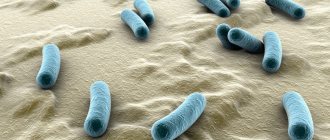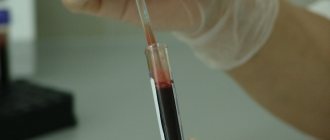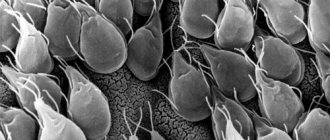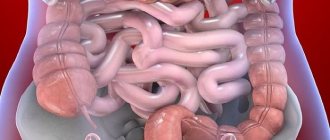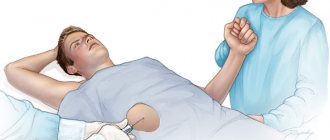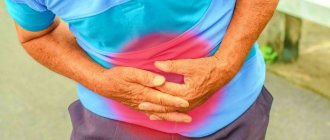Valentin Livanov 01/22/2018
Often, disturbances in the functioning of individual internal organs are accompanied by external manifestations, which are characterized by damage to the skin. The skin with liver diseases is also subject to changes - various spots and rashes may appear on it.
The organ, which acts as a vital filter that rids the body of toxins, must function smoothly. When the functioning of the liver is impaired, the entire body becomes intoxicated, which immediately affects the condition of the skin. Therefore, it is very important to recognize the pathology in time and begin treatment. One of the ways is to monitor the condition of your skin, because it is the first to signal any problems in the body.
How are the liver and skin related?
They say that a healthy liver means healthy skin. No doctor will deny such a cause-and-effect relationship. But how is skin condition related to the liver?
The fact is that the skin and this filtering organ in our body perform a similar task. The common function of the skin and liver is to remove toxic and processed substances. The liver in this case acts as the main filter of our body. The skin is an additional filtering mechanism, since the removal of toxins and excess salts occurs through the pores along with sweat.
If the liver does not cope with its main task, an excess of harmful substances enters the blood. The body reacts simply - it pushes them out through all free systems and organs, including through the skin. As a result, all the problems are “on the face”, or to be more precise, on the face. That is why, based on the condition of the skin, malfunctions in the liver can be preliminarily diagnosed. But for an accurate diagnosis, you need to know other signs of pathological changes in this organ.
Main symptoms of liver diseases
Skin rashes due to liver disease are not the only sign of a malfunction of the filtering organ. During an examination, a qualified doctor pays attention not only to external manifestations. Thus, patients with liver diseases complain of digestive disorders, pain in the right hypochondrium, heartburn and nausea. They also experience increased sweating, and the sweat itself has a pungent and unpleasant odor.
The presence of pathology is indicated by an increased size of the gland, yellowness of the skin and sclera, and disorders of the nervous system. Patients with intoxication of the body may suffer from headache, weakness, unstable stool, brown coating on the tongue and a bitter taste in the mouth.
There can be many signs of liver disease, in addition to skin rashes. Only a doctor can correctly assess the situation, carry out the necessary diagnostic measures and prescribe treatment. At the same time, it is important to quickly detect the problem, find out the cause of the malfunction of the liver and begin timely therapy. And to do this, you need to know what external signs you should be concerned about.
Causes of liver diseases
Despite the amazing ability of the liver to regenerate, its functioning can be disrupted under the influence of unfavorable factors. The main reasons that cause diseases of the “main chemical laboratory of the body” include:
- Poor nutrition. Eating fatty, fried and smoked foods in excess can cause congestion in the liver and gall bladder and the formation of stones in the bile ducts.
- Alcohol abuse. Ethyl alcohol, when broken down in the body, releases toxic substances that have a detrimental effect on liver cells. Regular and uncontrolled consumption of alcoholic beverages can lead to cirrhosis, a disease that threatens the patient’s life.
- Medications. Taking hepatotoxic medications is one of the most common causes of liver dysfunction. Many drugs have a destructive effect on the organ: antibiotics, hormones, non-steroidal anti-inflammatory drugs, etc. It is especially dangerous to self-medicate and take such drugs without medical supervision.
- Poisoning of the body with toxic substances. The constant intake of toxic and chemical substances, salts of heavy metals provokes liver damage. Workers in hazardous industries are usually exposed to this type of exposure.
- Infections and parasites - helminths and roundworms, entering the body, can become a source of pathological changes in the organ and provoke its cystic transformation.
- Viruses - failure to comply with personal hygiene rules, untreated inflammatory processes in acute or chronic form, unprotected sexual relations can lead to infection of the body with hepatitis B and C.
Characteristics of rashes in liver disease
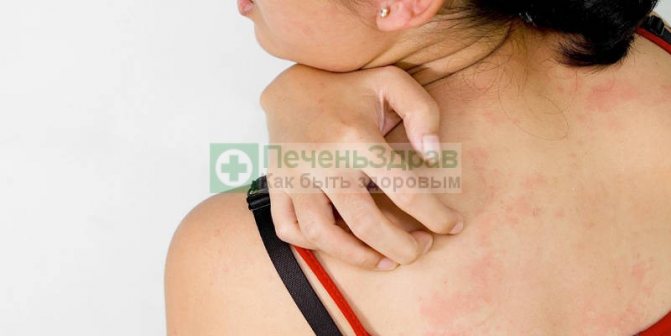
The skin undergoes a number of changes due to liver dysfunction. It acts as an indicator of the condition of the internal organ and is the first to signal a problem. Symptoms of liver disease on the skin can be very different. When the organ is damaged, the skin becomes pale; against this background, a venous vascular pattern may appear. Often the patient develops liver spots on the stomach and face. In addition, liver diseases are accompanied by other external manifestations:
- edematous phenomena;
- stretch marks;
- spider veins;
- liver plaques;
- dermatitis.
When noting the main signs of liver disease on the skin, special attention should be paid to the degree of jaundice. With a lemon-yellow color of the skin, we can talk about hemolytic disorders. A moderate degree of yellowness with an orange tint is direct evidence of liver pathologies. If the skin turns brown, this may indicate mechanical damage to an internal organ.
If you can’t visit a doctor, you can look at the photos and compare what they show with your tumors. But this is only a superficial assessment. Only a specialist can make an accurate diagnosis.
Spider veins
Such rashes resemble spiders in appearance. In the central part there is an arteriole, from which small vessels branch. They can appear on any part of the body, but are most often observed on the face and legs. Sometimes peeling appears around the affected area. The main reason for the formation of the vascular network is hemodynamic disturbances, which can be caused by liver pathologies.
Liver stars are diagnosed in persons suffering from poisoning, liver cirrhosis and hepatitis. They often appear in pregnant women. At the same time, such neoplasms can occur in the absence of any pathologies: overeating fatty foods, abusing bad habits, hypothermia, etc.
Rash
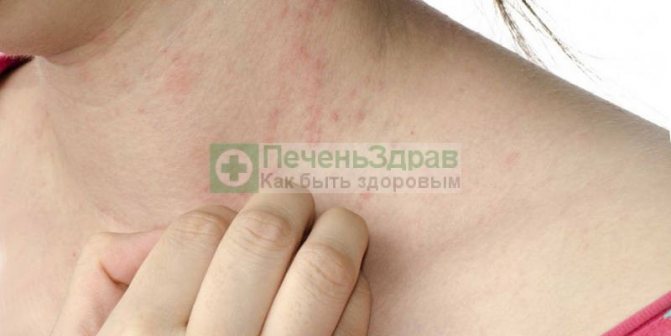
Rash due to liver pathologies can be of different types: acneous, purulent, papuloid, and with the presence of comedones and wen. Most often observed in the chest, neck and face. If the functioning of the liver is impaired, acne is localized mainly on the face - in the area of the bridge of the nose. Pimples on the cheeks also indicate problems with the filtering organ, and also signal stagnation of bile and biliary dyskinesia.
The presence of pustular elements indicates a decrease in liver function, resulting in an immune imbalance. The organ is simply not capable of synthesizing immunoglobin in sufficient quantities. Hemorrhagic rash (small hemorrhages on the skin) indicates a decrease in the synthetic function of the liver.
Allergic dermatitis
Dermatitis can be a manifestation of helminthic infestations. In this way, the body reacts to infection by helminths and their parasitic activity. Also, allergic rashes can occur as a result of an overdose and uncontrolled use of antibacterial and hormonal agents.
Liver plaques
These spots appear in chronic liver diseases. Outwardly, they look like burn marks. They have a clear rounded shape and edges that are felt upon palpation. At first, these are just hyperemic seals, but over time they become like blisters. After they burst, a red mark with a whitish center and a visible border remains at the site of the lesion.
Other skin reactions to liver dysfunction include redness of the palms, yellow plaques on the eyelids, palms, soles (xanthemas, xanthelasmas), urticaria, parmal erythema.
Severe redness of the palms, as a sign of pathology of the organ in question, is often accompanied by elevated body temperature, often this symptom spreads to the feet.
Yellow plaques usually form on the arms, legs, armpits and eyelids. They are formed as a result of lipid metabolism disorders, as a result of which cholesterol and fatty acids are deposited under the skin in the form of small, oval nodules.
Parmal erythema is a red rash that disappears when pressed, but quickly reappears.
Skin rashes in liver diseases are always accompanied by itching. This is due to an increased level of toxic bilirubin in the blood, which the organ is not able to neutralize. It is deposited in the epidermis and irritates it. In addition, other toxic breakdown products begin to accumulate in the skin.
Skin rashes due to hepatitis
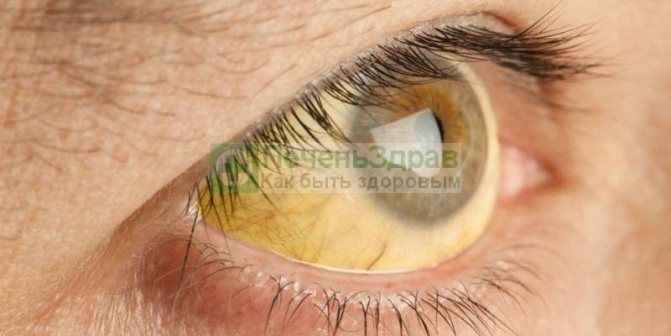
Hepatitis is a serious pathological condition in which inflammation of the liver occurs. There are at least seven forms of this disease. External skin changes are most pronounced with hepatitis A. The main symptom of the disease is jaundice. In the initial stage, the patient has a noticeable yellowness of the palms of the hands and sclera. Over time, yellowing spreads to other areas of the body.
Hepatitis B and C can occur without any symptoms for a long time. However, with structural changes in the liver and at an advanced stage of the disease, the patient develops a red rash, similar to allergic rashes. It is usually localized in the chest and back area. Often the affected areas itch and feel hot.
Skin rashes due to liver cirrhosis
The most common cause of this disease, as noted above, is alcohol abuse. Less commonly, cirrhosis is viral in nature. The skin suffers greatly with liver cirrhosis. With this disease, the whole complex of external manifestations characteristic of liver pathologies is observed:
- acne;
- the appearance of spider veins;
- unbearable itching of the skin;
- jaundice;
- pain when pressing on the affected areas;
- dark coating on the tongue.
Rashes due to liver failure
Liver failure occurs due to heavy metal poisoning, overdose of medications, narcotic drugs and alcohol. Often the cause is a previous liver disease.
The pathology can be acute or chronic. The main external signs of liver failure are:
- spider veins;
- yellowness of the skin;
- rash with pustular elements;
- severe itching;
- bitter taste in the mouth;
- nausea;
- change in tongue color.
If the symptoms are ignored and the pathology continues for a long time, the patient may develop a hepatic coma. Before this condition, as a rule, there is an increase in jaundice and other signs (lethargy, sleep disturbances).
Rashes due to parasitic infestations
Many are convinced that helminths settle and carry out their parasitic activity only in the digestive system. However, they are capable of occupying any internal organ. By infecting the liver, parasites damage the structure of the parenchyma and the vascular wall, and provoke cystic neoplasms.
It is worth noting that in the presence of helminths in the liver, characteristic jaundice is not observed. Red spots may appear on the skin in the area of the organ in question, and vascular networks and acne may appear on the face. Also, accompanying symptoms may be itching, enlargement of the liver, pain in the area of the right hypochondrium.
Rash due to gallbladder disease
Disruption of the bile ducts greatly affects the functioning of the liver. In case of gallbladder diseases, the external signs are the same: yellowness of the palms, sclera. Gastrointestinal disorders and general poor health are also observed.
Treatment of rashes due to liver diseases

Since spots on the skin due to liver diseases are only a consequence of pathology, to eliminate the problem it is necessary, first of all, to eliminate the cause. In other words, separate therapy for rashes is usually not carried out. Neoplasms go away on their own with proper treatment and a positive result.
Therapy of the bile ducts and liver involves a combination of various medications and adherence to a certain diet. Depending on the disease that led to liver dysfunction, treatment may differ:
- Hepatitis is treated by taking a complex of antiviral drugs. Patients are also prescribed a strict diet.
- Cirrhosis is difficult to treat, and all therapeutic measures are aimed at slowing down the processes of organ decay. Patients are prescribed certain medications and diet.
- In case of helminthic infestation, the doctor prescribes antiparasitic drugs. If there are cysts in the liver, surgery is prescribed to remove them and undergo rehabilitation therapy.
- When diagnosing gallbladder diseases, drugs with a choleretic effect are prescribed. If the patient is found to have large stones, they are removed surgically or by lithotripsy.
Treatment of liver diseases in any case requires taking medications - hepatoprotectors. These are drugs that protect liver cells from damage and promote their recovery. The most popular drugs in this group are Gepabene, Essentiale Forte, Karsil.
Knowing how the liver affects the skin, you should pay attention to the condition of your skin. It is the skin that first signals problems in the body and indicates the development of a serious pathology, which at first may develop asymptomatically.
How to deal with manifestations?
Patients who observe a rash and itching on the skin do not always realize that they have a disease such as cholecystitis and begin to see a doctor after symptoms more characteristic of this disease appear. However, treatment of the above manifestations should be carried out from the moment they appear. Specialists prescribe medications for patients with rashes and itching on the skin and strongly recommend not to self-medicate.
Sedative medications
Medicines that have a general calming effect on the central nervous system are called sedatives. Calming medications have the ability to regulate the processes of inhibition and excitation, providing a moderate anti-anxiety effect. Sedatives can partially relieve skin irritation and relieve itching. For this, the patient is prescribed the following medications:
- "Valerian". In tablet form, it is recommended to take 1-2 tablets three times a day. In the form of drops, the sedative should be taken 20-30 drops 3-4 times a day. Valerian is contraindicated in case of individual hypersensitivity.
- "Motherwort". A sedative in the form of an infusion should be taken 30-50 drops before meals three times a day. In some rare cases, side effects such as dizziness, fatigue and drowsiness may occur.
- Medicinal peony preparations. The product contains active components that have a moderate calming effect on the human central nervous system. Available in tincture form. It is recommended to drink a peony-based sedative 30-40 drops 3 times a day for a month. Contraindication is individual intolerance to the components of the drug.
- To directly treat rashes and itching, doctors prescribe ointments and creams, for example, Lokoid, Prednisolone, Sinaflan, Hydrocortisone. These topical medications effectively relieve allergic itching, skin irritation caused by exposure to bile acids. You should take special responsibility in eliminating itching and rashes on the skin, because only in this case can you cope with cholecystitis and prevent its complications.
Return to contents
Antihistamines
Antihistamine medications can cope with itching. These include: “Erius”, “Telfast”, “Loratadine”, “Cetrin”, “Clemastine”. The dosage for the listed medications is prescribed only by a specialized specialist, based on the patient’s age and the severity of the disease. Vitamins A and E can relieve irritation from the skin and moisturize it, thereby preventing discomfort.
Bile acid preparations
When inflammation of the gallbladder is accompanied by skin irritation and itching, the patient is prescribed medications that can prevent these manifestations. Drugs are prescribed that contain bile components and stimulate the discharge of this bitter fluid secreted by the liver, in the absence of stone formation in the bladder and ducts. “Gepabene”, “Festal”, “Allohol”, “Cholenzim” are considered effective remedies. It is recommended to relieve skin itching in the described disease with the help of medications that contain ursodeoxycholic acid. Popular remedies are Ursofalk, Ursodez and Ursosan. They interact with bile acids and at the same time form non-toxic compounds that reduce itching on the skin.
Diagnosis of the disease
At first, they don’t pay much attention to the appearance of acne. Antihistamine ointments, antiseptic and bactericidal agents are used, and the rash is covered with anti-acne cosmetics. If the use of local therapy does not lead to the desired result, you need to check the condition of the liver. The main cause of acne on the skin is damage to the liver and biliary tract, so timely diagnosis will help prevent the disease from starting and lead to a quick recovery.
If acne is not eliminated by means of direct action on it, it is necessary to be examined for the health of internal organs.
- A consultation with a gastroenterologist is needed to check the digestive system and confirm the diagnosis.
- You need to visit a dermatologist who will prescribe cosmetics and antibiotic therapy, and create a special diet to reduce inflammation of the skin.
- It is important to consult an endocrinologist to exclude hormonal imbalances.
- In case of hormonal imbalance, birth control pills may be prescribed to reduce acne. To do this, you need to undergo an examination by a gynecologist.
- The opinion of specialists in oriental medicine is taken into account. They can prescribe herbal infusions and teas to cleanse the body, and develop a special diet.
Diagnostic procedures to detect the problem:
- general analysis of urine and blood, as well as a biochemical blood test (determination of liver tests - bilirubin, ALT, AST and the state of protein metabolism - cholesterol, serum protein and its fractions);
- coagulogram (blood clotting);
- ultrasound examination of the liver and gallbladder;
- MRI of the liver and biliary tract.
Causes of skin itching and rashes with cholecystitis
Why does skin irritation and rash occur? The appearance of these symptoms is due to the inflammatory process on the walls of the bile ducts, the formation of stones in them, as well as disruption of the motor activity of the bile bladder, which ultimately leads to a failure of the normal functioning of the outflow of bile. As a result, bile toxins penetrate into the blood, and the skin begins to acquire a yellowish tint, itch due to irritation of the nerve endings, and become covered in a rash.
In addition, itching of the skin due to inflammation of the gallbladder can appear when the process of absorption of substances is disrupted, which are not able to penetrate into the tissues without the components of bile. If the green liquid secreted by the liver is unable to enter the lumen of the duodenum, the process of breaking down fats and similar food components becomes impossible. As a result, the body does not receive the required dose of vitamins K, A and D, which are necessary for the normal condition of the skin. The skin becomes dry and prone to irritation. When scratching the rash, wounds can form, which often become inflamed and infected. Itchy skin does not have a specific location.
Treatment of rashes caused by hepatitis
Patients with hepatitis are concerned about the rash and itching that accompanies it. There are several reasons for this skin condition, and one remedy cannot eliminate them. Each skin problem requires an individual solution.
Acne treatment
If the appearance of a rash is caused by various hormonal disorders, problems of immunity and metabolism that have arisen against the background of hepatitis, then external remedies alone cannot be used.
Preparations for the treatment of acne (if the cause is hepatitis):
- Lotions and gels with antiseptics, antibacterial ointments.
- Intestinal sorbents that protect the body from toxins.
- Drugs that bind fatty acids and bilirubin.
- Antiviral agents.
- Immunostimulants.
- Vitamin and mineral complexes.
- Preparations for normalizing intestinal microflora.
- Hepatoprotectors necessary for the restoration of liver cells.
Sorbents eliminate one of the most important causes of acne formation - exposure to toxins. Together with them, these substances are excreted from the body almost unchanged. Adsorption occurs in the intestines, then the sorbent, along with harmful molecules, leaves the gastrointestinal tract naturally.
Preparations with sorption properties:
- Lactofiltrum.
- Black coal.
- White coal.
- Enterosgel.
- Polyphepan.
Vitamins A, E, C, group B, as well as mineral elements are especially important for the skin. Rich sources of biologically active substances: carrots, green vegetables, apricots, fish.
Local anti-inflammatory agents can be applied to acne with hepatitis B and C. Infusions of chamomile, calendula, and propolis are used to cleanse the skin. Ointments with zinc oxide, salicylic acid, retinoids, and antibiotics are used. Products to reduce oiliness and cleanse the epidermis of microbes are applied twice a day.
It is not recommended to take the following actions yourself:
- squeezing pimples;
- removing skin stains with concentrated solutions of fruit acids;
- cleansing the skin using pumice, a scrub with coarse particles.
When squeezing pimples, the risk of spreading a bacterial infection in the deep layers of the dermis increases. In addition, damage to the skin makes it difficult for it to heal properly. New York dermatologist Erin Gilbert suggests cooling the skin before popping pimples with an ice cube wrapped in a strip of gauze or thin cloth. In order to prevent infection by microbes, the doctor advises applying antibacterial ointment directly to the pimples.
What skin diseases are aggravated by HCV?
Skin diseases with hepatitis C occur not only due to infection, but also as independent diseases associated with HCV. Dermatological manifestations are autoimmune in nature, and the hepatitis C virus is the trigger for the activation of lymphocyte-mediated reactions. These diseases include lichen planus, necrotizing acral erythema, porphyria cutanea tarda, allergic eczema and urticaria.
Pimples and acne
Acne with hepatitis C is formed due to a decrease in the detoxification function of the liver. Metabolic products accumulate in the skin, which leads to vesicular, papular, pustular rashes. Hormonal imbalance leads to dysfunction of the sebaceous and sweat glands, clogged pores, and an excess supply of toxic substances in the skin.
Allergies and urticaria
Allergy to hepatitis C develops in the form of an urticarial rash in response to a viral load, cholestasis, dyspeptic disorders, or an incorrectly selected antiviral therapy regimen. Pseudoallergic urticaria in hepatitis C occurs due to chronic inflammation, suppression of liver function, increased levels of xenobiotics, bilirubin and transaminases in the blood. False urticaria occurs without the participation of allergic antibodies.
How to distinguish allergies from rashes characteristic of hepatitis C:
- The variant of the course can be differentiated using skin tests, assessing the state of liver function and its biotransformation ability.
- With hepatitis C, the rash and itching worsen at night.
- Antihistamines do not help with itching.
- The rashes are of a varied nature: spots, spider veins, hemorrhagic lesions.
- The skin in the affected area may turn yellow.
The relationship between rashes and diseases
Indicators of the health of internal organs are “assigned” to each area on the face in case acne appears there. Based on the location of acne, one can judge the disease not only of the liver, but also of another organ. Often the gland also undergoes dysfunction in the presence of chronic or acute pathology in another organ. A rash on the forehead indicates problems with the ovaries, and if they are closer to the hairline, an exacerbation of chronic gastritis or gall bladder. Pimples above the eyebrows indicate poor bowel function. If the rash is profuse, it can be caused by the use of medications, hormonal agents or vitamins in large quantities. A rash on the nose means that there are hormonal imbalances or problems with the cardiovascular system.
Pimples on the chin indicate the appearance of tumors on the genitals. A rash indicates thyroid problems. If the rash is on the lips, on the shoulders, this is a sign of disruption of the gastrointestinal tract from the esophagus to the large intestine. Single pimples on the cheekbones in the area under the eyes warn of diseases of the kidneys and adrenal glands. If the rash is on the chest and back, there are problems with the lungs.
Skin rashes due to hepatitis C (photo)
Skin manifestations are common to several diseases. It is useful to know the distinctive features of rashes characteristic of pathology. The difficulty lies in the variety of manifestations: spots, small pimples, eczema. Photos of patients with hepatitis C whose skin is affected by a specific rash will help identify painful rashes.
This is interesting: Hepatitis C: treatment with effective folk remedies
The general condition of the skin is unsatisfactory. It becomes thinner and acquires a bluish tint due to the appearance of capillaries. The rash is usually localized most often on the face, abdomen, and arms. Any area of the body can be affected.
Biliary cirrhosis - what is it?
Hepatic biliary cirrhosis is a chronic disease that gradually progresses and is manifested by the replacement of healthy organ tissue with fibrous formations. For a long period the pathological condition is not suspected. In later stages, small liver signs, portal hypertension, and hepatic encephalopathy occur.
The disease begins to be suspected after an ultrasound scan and blood tests. For complete clarification, a liver biopsy is necessary. The patient is shown a gentle and correct lifestyle. If there is a terminal stage, a liver transplant is necessary. Pathology is a serious disease that requires careful monitoring.
Appearance of the abdomen with cirrhosis at the last stage
Big belly and prominent veins
During the first stage, notes Prokishechnik.Ru, it is problematic to detect obvious symptoms and respond in a timely manner. With the development of liver cirrhosis to the last stages, external signs become clearly visible. You can see them in photos of people with this diagnosis.
Patients with liver cirrhosis begin to experience stomach problems, discomfort, possible nausea, and loss of appetite. Ulcers may bleed and intestinal spasms may appear. In this case, a change in the structure and color of the stool is observed, and an unpleasant odor comes from the mouth.
Fluid accumulates in the stomach, the volume of which can reach 26 liters. The skin acquires a yellowish tint and becomes rough. In the final stages, the stomach looks like a swollen ball. These symptoms are called ascites, which appear in the last stages of the disease.
Symptoms of cirrhosis from a photo of a person
bloated belly
With such a terrible diagnosis as cirrhosis of the liver, photographs of patients will help determine the symptoms of the disease and its effect on the body. Every day, in the presence of a disease and with the deterioration of the person’s condition, external changes, according to ProKishechnikPy, become noticeable to the eyes of others. We describe them below:
Weight loss
Lack of appetite and poor functioning of the digestive system lead to rapid weight loss.
Tired look
Weakness and insomnia are observed, which contributes to the formation of bags and bruises under the eyes.
Yellow skin tone
Yellow skin tone
The skin turns pale, becomes flabby, and acquires a yellowish tint.
Skin rashes
itching and rashes on the skin
Rashes and redness of the skin are noticed, causing itching, burning, and scabies. Scratching spots form.
Appearance of bruises
bruises
At times, bruises, blue discoloration in different parts of the body, and the appearance of bruises from light bruises or touches are noticeable.
Vein enlargement
Enlarged veins and yellow skin
The veins dilate, become visible and bulging.
Palm color
palm color
The palms become red, the nails turn pale.
Video about the problems of diagnosing the disease
Etiology
There are several predisposing factors for the occurrence of such a manifestation. The main reasons are considered:
- cirrhosis of the liver;
- hepatitis of a viral, alcoholic or toxic nature;
- overdose of group A vitamins;
- acute or chronic form of liver failure;
- lack of B vitamins;
- vegetative-vascular dystonia;
- diabetes;
- contact dermatitis;
- tuberculosis;
- a disease that is caused by a lack of thyroid enzymes;
- excess of female sex hormones in the body. Normally, estrogen passes through the liver, which is aimed at regulating its amount. If there is a lot of it in the body, then this leads to vasodilation and, as a result, redness of the skin;
- nonspecific colitis;
- influence on the body of parasites;
- leukemia;
- hepatosis;
- sexually transmitted diseases;
- scarlet fever;
- rheumatoid arthritis;
- in rare cases, indiscriminate use of certain groups of medications;
- the period of bearing a child.
However, there are cases in which hepatic redness of the palms is normal - a similar manifestation can occur in completely healthy adolescents during puberty.
The pathogenesis of the development of this symptom lies in the fact that against the background of liver damage, circulatory disturbance occurs in the main vein of this organ - the portal vein, which, in turn, entails the development of arteriovenous shunts. This means that in order to properly nourish the skin, an additional number of vessels are formed that connect the veins to the arteries.
Causal diseases and clinical manifestations of cirrhosis
Often, the early manifestations of liver cirrhosis depend on the diseases that caused the cirrhosis. Let's consider the most common causative diseases and clinical manifestations of cirrhosis at an early stage in these diseases.
- Viral hepatitis is considered the most common cause of cirrhosis. At first, the disease may not manifest itself in any way, thereby causing a false state of well-being.
Most patients note a deterioration in appetite, abnormal stool, icteric discoloration of the skin and mucous membranes, pain in the abdomen and right side. After testing, the level of ALT and AST is increased several times. And the diagnosis of viral hepatitis is confirmed by the polymerase chain reaction method, which detects fragments of viruses D, C, B in the blood.
Interesting! With viral hepatitis, cirrhosis of the liver develops approximately 20–25 years from the onset of the disease.
- In alcoholic liver disease, early signs of cirrhosis appear after 10–12 years of alcohol abuse. The first symptoms of the disease are yellowing of the skin, sclera, weight loss of the patient, and patients often note an increase in body temperature. A detailed study of life history (prolonged alcohol consumption), a blood test (increased number of leukocytes), and an ultrasound of the liver help to make a diagnosis of cirrhosis.
- Autoimmune hepatitis most often affects young women. Early manifestations of the disease are lack of appetite, weakness, dark urine and yellow discoloration of the skin. In parallel with these signs, joint damage often occurs: pain, swelling and redness. Large joints of the limbs are affected: hip, knee, shoulder, elbow, spine. Therefore, the disease is not diagnosed immediately, but within 1–5 years other diagnoses are mistakenly made: systemic lupus erythematosus, rheumatism, rheumatoid arthritis.
Redness of the palms
Red palms (otherwise known as “hepatic palms”, “palmar erythema”) are a characteristic sign of cirrhosis. Redness in the form of veins is localized mainly on the palms and soles, less often on the folds of the phalanges of the fingers. When pressed, the palms turn pale, but then the unnatural red tint returns.
Redness on the palms is caused by vascular disorders and hormonal changes that occur with cirrhosis.
However, other diseases and conditions may also exhibit similar symptoms:
- hyperthyroidism (increased production of thyroid hormones);
- diabetes;
- rheumatoid arthritis (systemic connective tissue disease primarily affecting small joints);
- tuberculosis;
- blood cancer.
Therefore, if your palms are red, you should not draw premature conclusions.
You need to pay attention to the condition of the skin and mucous membranes, and if other visual signs of cirrhosis are detected, consult a doctor and undergo a full liver examination to clarify the diagnosis
Treatment prognosis at the last stage
The disease affects the entire body, so it becomes impossible to cure it at the last stage. The patient has only the ability to: completely change his lifestyle, give up bad habits, change the menu, thanks to which he can extend his life. Organ replacement surgery may be required, followed by constant monitoring by doctors.
With cirrhosis of the liver, a person's appearance changes, as can be understood from the photographs. It’s not so easy to see internal changes, but it’s worth knowing that to maintain the whole body you will have to take medications, regularly give injections and IVs. The task of doctors is to prevent the development of other diseases caused by liver failure.
Medicines, notes prokishechnikRu, can only be prescribed by a doctor, having selected a suitable menu and set of remedies. Self-medication can lead to a sharp deterioration of the condition or death. Medicines prescribed by a doctor can be divided into several groups:
- diuretics;
- vitamin complexes;
- diuretics;
- hepatoprotectors;
- adsorbents;
- glucocorticoids.
For the rest of his life, it is important for the patient to maintain a certain diet, avoid alcohol, smoking, eat light, healthy foods, and lead a healthy lifestyle.
How to get rid of a rash
First of all, it is necessary to begin treatment of hepatitis C through antiviral therapy, which will normalize liver function and restore hormonal levels. Usually these are interferons together with ribavirin or new generation drugs: Soforsbuvir, Ledipasvir, Daclatasvir, Velpatasvir and their generics.
It is also necessary to take hepatoprotectors (Gepabene, LIV-52) to restore the liver, adhere to diet No. 5, and lead a healthy lifestyle.
To improve the patient's condition, the doctor may advise:
- hormonal ointments (Akriderm, Hydrocortisone);
- wound healing agents (Triderm, Belosalik);
To relieve itching, you can make lotions from a decoction of chamomile, string (2 tablespoons of herbs per 200 ml of boiling water). The skin will recover only after recovery from hepatitis.
Symptoms of liver cirrhosis
Symptoms of liver cirrhosis vary from person to person, but some of the main ones include:
- unpleasant or painful (depending on the stage) sensations in the right hypochondrium associated with eating fatty and fried foods, as well as physical activity;
- nausea (even vomiting of blood is possible);
- dry mouth;
- a feeling of bitterness in the mouth;
- lethargy, fatigue;
- nervous disorders;
- problems with stool (severe diarrhea is possible even while taking medications);
- increased gas formation;
- loss of appetite, resulting in weight loss;
- menstrual irregularities in women and problems with potency in men.
At the very first symptoms from this list, you must immediately contact a specialist so that the doctor can prescribe the necessary studies to confirm or refute the probable diagnosis. The most alarming symptoms that should alert both the doctor and the patient are the following:
- general weakening of the body;
- muscle atrophy;
- pale skin color;
- dry, unhealthy flaky skin;
- redness of the skin in the area of the fingernails;
- yellowed eyelids (xanthelasmas);
- enlarged fingertips (fingers – “drumsticks”);
- swollen joints;
- dilation of the blood vessels of the abdominal wall;
- venous noise in the umbilical region when listening.
Specific signs of liver cirrhosis
In addition to the above, any doctor is also well aware of the specific signs of liver cirrhosis, which appear due to the liver being turned off from the process of producing estrogen. These signs include:
- spider veins located on the body above the waist;
- angiomas in the corners of the eyes and nose, which may bleed periodically;
- unnatural bright red palms (erythema);
- bright red tongue with pronounced swelling, but no white or yellow coating;
- burgundy oral color;
- lips of a rich bright red color;
- gynecomastia in men. In men, breast tissue grows, which can be explained by an increase in estradiol and a decrease in testosterone in the blood.;
- atrophy of the genital organs;
- little expression (or its complete absence) of secondary sexual characteristics.
Detection of such signs should be a signal for a thorough examination.
The essence of the disease
the essence of the disease
With the disease, liver cells begin to decompose, their structure and size change. The parenchymal tissue responsible for blood circulation changes structure and turns into stroma. This leads to serious disruptions in the body.
The liver itself gradually decomposes and its performance is lost. If the disease is not detected in time and treatment is not started, a person will not be able to fully restore its functionality. Therefore, it is so important to detect the presence of problems in the digestive organs when the first stage of cirrhosis has occurred. And for this, according to prokishechnikRu, you need to undergo a full examination of the body at least once a year - this will help avoid unwanted ailments and stop the development of pathologies in time. There are several reasons why cirrhosis may occur:
- Alcohol. If you abuse alcohol for several years, the chance of developing pathology increases 16 times;
- Hepatitis. During the disease, the liver decomposes. Infection can be detected at the last stage. It can be acquired through blood through the use of drugs, promiscuity, or blood transfusions;
- Medicines. Many drugs affect the liver, destroying it. When using medications in large quantities, you need to be careful. It is useful in such cases to take hepatoprotectors;
- Increased weight. The liver becomes covered with fat and cannot function normally. This is how fatty hepatosis is formed;
- Diabetes. In diabetes, all internal organs and their vessels suffer, one way or another.
Hereditary characteristics can also contribute to the onset of the disease. In rare cases, the disease may appear on its own. This type of cirrhosis is called cryptogenic.
Treatment of liver spots
The most important thing is that you should not self-medicate. If you have liver spots, you should definitely contact a specialist who will examine you and prescribe the correct treatment.
A large number of cosmetic companies offer various medications and cosmetics for removing stains. However, the problem is within you, and after some time they will return again. It is better to focus efforts on combating the source of the problem than to mask it.
The liver is an amazing organ. She is capable of self-regeneration even in the most advanced cases, so if you help her, recovery will go faster. You should take medications as directed by your doctor, undergo procedures and follow a diet. Treatment of any of the diseases is carried out in various ways:
- In case of cirrhosis, treatment is aimed at stopping the processes of decay of organ structures. It includes the use of medications and diet.
- To get rid of diseases of the gallbladder and its ducts, you need to methodically take choleretic drugs. Also, one of the methods of non-surgical treatment is remote ultrasound lithotripsy. However, if the stones are too large, then only surgery will help. Now medicine offers the most modern methods of removing stones: crushing them with a laser, endoscopic cholecystectomy or open abdominal surgery.
- If a person has parasites, they are treated with antiparasitic drugs. If they do not help, surgical excision is used, then restorative measures.
- In the case of hepatitis, antiviral medications and a strict diet are used.
One way or another, the best option is to turn to a professional, if only to avoid making things worse. After all, health is one thing, and you need to preserve it with all your might. Take care of yourself!
Is it possible to self-medicate?
Treating inflammation of the gallbladder on your own and without the advice of a specialized specialist is strictly contraindicated, since even a single dose of medications with a choleretic effect can promote the outflow of bile and, what is most dangerous, push stones that, when moving, can clog the bile ducts. Therefore, patients are advised to consult a doctor for medical help at the first signs of cholecystitis, and also immediately begin following a gentle diet.

Often, disturbances in the functioning of individual internal organs are accompanied by external manifestations, which are characterized by damage to the skin. The skin with liver diseases is also subject to changes - various spots and rashes may appear on it.
The organ, which acts as a vital filter that rids the body of toxins, must function smoothly. When the functioning of the liver is impaired, the entire body becomes intoxicated, which immediately affects the condition of the skin. Therefore, it is very important to recognize the pathology in time and begin treatment. One of the ways is to monitor the condition of your skin, because it is the first to signal any problems in the body.
